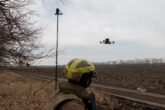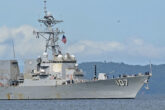April 21, 2021
America’s Military Risks Losing Its Edge
How to Transform the Pentagon for a Competitive Era
For almost a decade, U.S. defense officials have deemed the return of great-power competition to be the most consequential challenge to U.S. national security. In 2012, during the Obama administration, the Defense Department announced that “U.S. forces will no longer be sized to conduct large-scale, prolonged stability operations,” such as those in Afghanistan and Iraq, marking a sharp departure from the United States’ post-9/11 defense strategy. In 2016, Secretary of Defense Ashton Carter highlighted a “return to great-power of competition.” And in 2018, the Trump administration’s National Defense Strategy crystallized this shift: “Inter-state strategic competition, not terrorism, is now the primary concern in U.S. national security,” it declared, with a particular focus on China as the pacing threat.
Yet despite such a widespread and bipartisan acknowledgment of the challenge, the U.S. military has changed far too little to meet it. Although strategy has shifted at a high level, much about the way the Pentagon operates continues to reflect business as usual, which is inadequate to meet the growing threats posed by a rising China and a revisionist Russia.
Much about the way the Pentagon operates continues to reflect business as usual, which is inadequate to meet the growing threats posed by a rising China and a revisionist Russia.
That disconnect is evident in everything from the military’s ongoing struggle to reorient its concepts of operations (that is, how it would actually fight in the future) to its training, technology acquisition, talent management, and overseas posture. Some important steps have been taken to foster defense innovation, but bureaucratic inertia has prevented new capabilities and practices from being adopted with speed and at scale.
The Biden administration has inherited a U.S. military at an inflection point. The Pentagon’s own war games reportedly show that current force plans would leave the military unable to deter and defeat Chinese aggression in the future. The Defense Department’s leadership, accordingly, must take much bigger and bolder steps to maintain the United States’ military and technological edge over great-power competitors. Otherwise, the U.S. military risks losing that edge within a decade, with profound and unsettling implications for the United States, for its allies and partners, and for the world. At stake is the United States’ ability to deter coercion, aggression, and even war in the coming decades.
Read the full article from Foreign Affairs.
More from CNAS
-
Drones: Who Is Making the New Weapons of War?
From Ukraine and Russia to Gaza and Sudan, drones have become a key weapon of war. Which companies are making them, and profiting from this rapidly expanding but controversial...
By Stacie Pettyjohn
-
Who Will Lead on Military AI, the Government or Industry?
The military is going to use artificial intelligence. But while planners in the government may have an idea of the best way forward, can they truly lead, or will industry stee...
By Josh Wallin
-
What Trump Really Wants with Venezuela
The Trump administration says it’s targeting narco-traffickers. But critics at home and abroad have decried the attacks and challenged their legal basis. Meanwhile, President ...
By Becca Wasser
-
Defense / Technology & National Security
What to Expect from Military AI in 2030As the US military races to harness artificial intelligence, experts say the biggest AI breakthroughs may not come from “killer robots” or autonomous war machines, but from al...
By Josh Wallin




